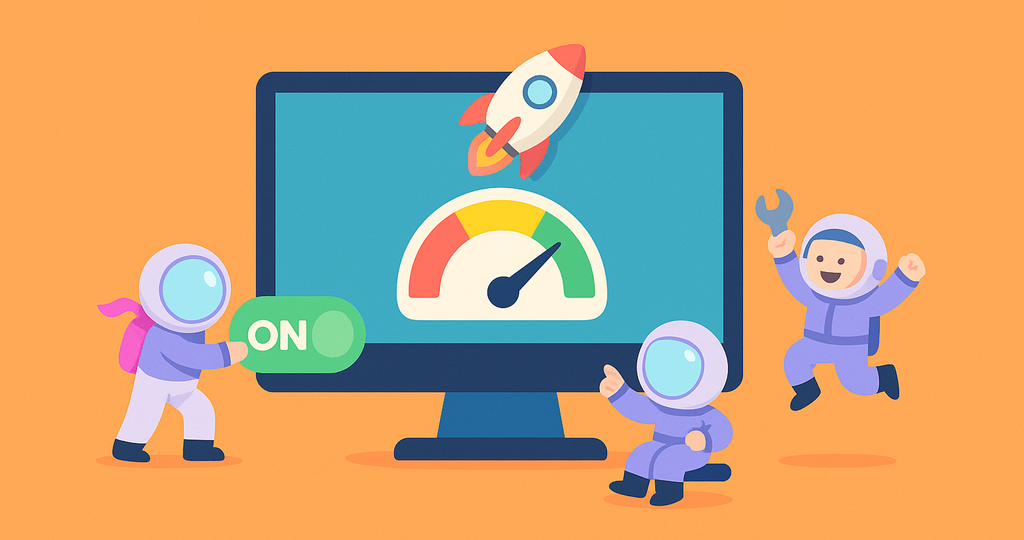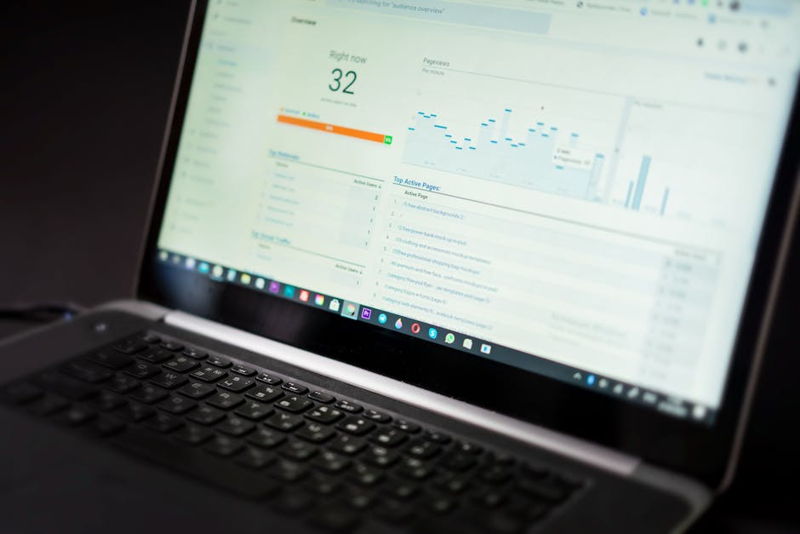Ever wish your SEO client dashboard could actually change how you connect with clients maybe even make your life easier? The truth is, a solid SEO client dashboard does more than just spit out reports: it opens the door to transparency and real data backed decisions. In this guide, you'll get a quick rundown five steps, nothing complex for building a dashboard that doesn't just look nice, but actually boosts how happy your clients are and how smoothly your agency runs.
Picture this: every scrap of your client’s SEO data, right where you need it. No digging, no wild goose chases, just clear visuals and instant insights. That’s the promise of a dashboard done right, and honestly, these days, it’s not an extra it’s expected. So, let’s get started and see how you can create a dashboard that’ll make your agency stand out. But also, that feels like it’s actually for humans to use.
Table of Contents
What is an SEO Client Dashboard?
Definition and Purpose
An SEO client dashboard is the go to spot for pulling together all your client’s SEO info, from keyword rankings to site visits and conversions. It makes sense of tangled SEO numbers, letting clients actually see what’s going on with decisions to match. Take this: one client used their dashboard to spot a jump in site visitors and track a tricky keyword as it climbed past competitors. That one view changed what they did next.
Heard about that small business that put a dashboard in play and then watched their site traffic spike? They could finally see what worked, where things lagged, and adjust their whole approach. Before long, sales and revenue followed. That’s not just luck it’s using the dashboard as a real tool, not just a status update.
Suggested Reading: What is an SEO Client Dashboard?
Key Benefits for Agencies
The perks of using an SEO client dashboard? There are plenty. It cuts reporting headaches, makes teamwork less painful, and actually keeps clients sticking around. According to John Mueller, “A well designed dashboard can help agencies provide more transparent and actionable insights to their clients, leading to increased trust and better campaign outcomes. ” That’s worth repeating.
- Keyword tracking
- Backlink analysis
- Conversion rate monitoring (yes, that matters)
- Technical SEO snapshot
- Customizable reporting because every client’s different
With those, you’re not just reacting. You’re planning ahead. One agency, for example, used their dashboard to spot technical SEO glitches and fix them before a client ever noticed. Not everything needs a tidy ending, but you get the idea.
Common Dashboard Features
A really useful SEO dashboard bundles together things like keyword tracking, backlink deep dives, and conversion stats. Sure, a lot of dashboards have the same features, but the best ones let you tweak what’s shown. Maybe your client only cares about five keywords so you give them just that. Or someone’s obsessed with backlinks? No problem, you highlight those front and center.
And when you can show clean, real time insights, trust starts to build. Not overnight, but slowly, as decisions start making more sense and everyone stops talking past each other.
Why Your Clients Need a Dashboard
Improved Transparency
Giving clients a dashboard is like turning the lights on they see what you see. Suddenly, you can pull up exactly how a campaign is going, with visuals even a non SEO person can get. Had a client question why their site dropped in the rankings last month? Show them. No smoke and mirrors.
Once clients can poke around their own data, the whole relationship changes. Feedback gets sharper, and strategy meetings stop being guesswork. And that’s not just talk it actually leads to stronger results (and fewer awkward calls).
Faster Reporting Cycles
Automated dashboards mean no more burning hours every week making the same chart. It’s all there, ready for client eyes, and updates itself. You could have a new report land in your client’s inbox every Monday morning while you’re still on your first cup of coffee.
Speed matters. When insights come fast, you can actually fix what’s broken or double down on a win before it goes stale. If one of your clients’ conversion rates tanks, you’ll see it in time to do something about it. Or, if things go well, celebrate a bit.
Enhanced Client Retention
Keeping clients around is half the battle and clear, steady communication via a dashboard is a big chunk of why they stick. There’s data on this: folks who get regular, no nonsense reports are far more likely to stick around for the long haul. Anticipate concerns, show you care, and, well, most of your client headaches disappear.
One agency even caught a technical issue before the client could complain, just by watching the dashboard. That kind of move goes a long way in building trust. Not every story has a dramatic twist, but you get where this is going.
Step 1: Identify Essential SEO Metrics
Traffic and Rankings
Watching traffic and keyword rankings isn’t optional it’s the pulse check for everything else. If numbers start dropping, something’s up. Maybe it’s a Google update, or maybe it’s a technical slip up. Seeing both climb together? That’s when you know your tweaks are finally paying off.
Let’s be honest, staring at spreadsheets won’t tell you the full story. A dashboard can give you those “aha” moments in real time, which means less flailing and more fixing.

Backlink Profiles
Backlinks can make or break your rankings. That’s why dashboards that track not just the number, but the quality, of links, matter. If a spammy link pops up, you’ll see it. Not always fun, but necessary.
Some agencies realized they needed a whole new link building plan after spotting odd patterns in their dashboard. It’s not magic, just paying attention to the right numbers.
Conversion Tracking
Traffic is nice, but conversions are where the rubber meets the road. A dashboard that puts conversion data front and center lets you see if your efforts are actually putting money or leads on the table.
One time, a client’s traffic doubled but leads actually dropped. Only the dashboard caught it. No one likes that surprise, but it helps you course correct before it hurts.
Technical SEO Indicators
Technical issues slow load times, mobile mess ups, expired SSL can quietly sink your rankings. Dashboards that show these red flags mean you can fix things before search engines (and users) run for the hills.
For example: your dashboard alerts you the site speed’s tanking after a big image upload. You fix it in an afternoon, and rankings stay steady. Not everything is dramatic, but these saves add up.
Step 2: Choose Your Dashboard Platform
Popular Dashboard Tools
The tool you pick sets the tone. Ahrefs, SEMrush, SERPed.net each brings something a little different. Some focus on backlinks, some on SEO audits, some try to do it all. Think about what fits your agency’s size and clients before you jump in. There’s no one size fits all.
And don’t get distracted by shiny features you’ll never use. Focus on what actually helps you and your clients stay on the same page.
Pros and Cons of Each Platform
Every platform’s got its quirks. Ahrefs is a powerhouse for backlinks and keyword visibility. SEMrush handles technical audits and keeps an eye on the competition. SERPed.net, meanwhile, is a go to if you're on a tight budget.
If you hate clunky dashboards, check how easy each is to use. Got a tight budget? Price will matter. A quick glance at user reviews can save you a lot of regret down the line. No software is perfect, so pick your battles wisely.
Integration Capabilities
If your dashboard can’t play nice with the rest of your tools, you’re in for a headache. Integrations let you pull data from everywhere Analytics, Search Console, backlink checkers into one spot. That’s how you future proof your workflow.
Some agencies, for instance, combine Google Analytics and Search Console with their dashboard, giving a panoramic view of what’s working. Makes your strategy tighter, and you won’t have to jump between tabs all day.
Step 3: Connect Data Sources Securely
Google Analytics and Search Console
Hooking up Analytics and Search Console is step one, and honestly, it’s easier than it sounds. Guide your clients through it so nothing falls through the cracks. Data encryption isn’t just a technical box to tick it keeps everyone’s info safe.
Once you’re connected, you see live stats traffic flowing in, keyword rankings shifting. It’s like having a window into your site’s heartbeat. Sounds a bit dramatic, but it’s true.
Third Party SEO Tools
Bringing in platforms like Ahrefs, SEMrush or SERPed.net opens up a whole new layer. Suddenly, you can see backlink growth, keyword jumps, content flops, all in one glance. Not every agency needs all the bells and whistles, but the extra insights can be game saving.
One agency set up Ahrefs for a notoriously tricky client and finally cracked why traffic had stalled. The dashboard made the pattern obvious something they’d missed for weeks. Lesson learned, right?
API and Manual Options
APIs make life smoother automatic data pulling means less human error. But, sometimes, you’ll need to hand enter data, especially if your client’s on the small side or using a quirky CMS. Manual uploads aren’t glamorous, but sometimes they’re necessary.
Mixing auto and manual input isn’t ideal, but it lets you cover every angle. And you’ll thank yourself when that one weird metric actually matters.
Tired of clunky reports?
Join 100+ SEO agencies already delivering stunning client dashboards with SERPed Agency… A smarter way to impress and retain clients.
Step 4: Customize Your SEO Client Dashboard
White Labeling and Branding
No reason your dashboard should look like someone else’s. Branding adding your logo, picking the right color palette, making it feel “you” helps keep your agency top of mind. It’s more than vanity: clients notice when things feel buttoned up.
One agency went all in on branding, even tweaking dashboards for each client. The result? More referrals just because clients remembered who set them up so well.
Setting Permissions and Access
Not everyone needs to see everything. Setting up the right permissions means clients, internal staff, and the occasional outside consultant get just what they need no more, no less. It’s a headache to set up at first, but worth it for peace of mind.
Protecting sensitive data shows you care. And if you ever have to lock down something in a hurry, you’ll be glad you did this part right.
Visualizing Data Effectively
If your dashboard looks like a tangle of numbers, nobody’s going to use it. Good visualizations charts, graphs, even a simple color code make complex info easy to digest. Clear beats clever every single time.
One agency switched to bar charts for site traffic and saw clients actually start asking smart questions. Sometimes the simplest tweaks have the biggest impact.
Step 5: Share and Maintain Your Dashboard
Client Training and Resources
Even the prettiest dashboard is useless if clients can’t make sense of it. So, walk them through it screen share, video guides, cheat sheets, whatever works. Don’t just toss them a login and disappear.
Heard of an agency doing live workshops just for dashboard walk throughs? Their clients stopped calling in a panic every time a number changed. Goes to show, a little training saves a lot of hassle.
Regular Updates and Reviews
Set a reminder: dashboards need check ins. Keep the data fresh, the goals current, and the strategy sharp. Use scheduled reviews to talk through wins, missteps, and new ideas it keeps everyone invested.
Clients who see you updating and tweaking their dashboard know you’re not just coasting. It builds real trust, and trust sticks around.
Handling Feedback and Requests
Clients will have opinions sometimes strong ones. Ask for feedback, and don’t just nod along. Weigh their requests, see what’s doable, and explain your choices. Sometimes you’ll say no, but show your work.
One client asked for a wild new feature that didn’t quite fit, but the agency found a workaround. The gesture mattered more than perfection.

Troubleshooting Common Dashboard Issues
Data Not Syncing
It happens: one day the data just stops updating. First, check for simple stuff did a password change or a permission get revoked? Nine times out of ten, that’s the culprit. Fix it quick, or you risk losing momentum.
An agency once spent hours hunting a sync bug, only to realize someone had unplugged an API key. Sometimes, it’s really that simple.
Visualization Errors
Charts look weird or numbers don’t add up? Double check your data sources and settings before you panic. Sometimes, a missing field or a misnamed metric is all it takes to throw things off.
Don’t be afraid to ask for help when you’re stumped. Clients care more about getting it right than who found the typo.
Slow Load Times
No one likes waiting for a dashboard to load. If things start to drag, pare back the amount of data, use caching, or upgrade your server. Even small tweaks can shave off precious seconds.
And if all else fails, maybe that endless historical data isn’t as important as you thought. Prioritize speed clients will thank you.
Best Practices for Ongoing Success
Scheduling Regular Reports
Set up automated reports weekly, monthly, whatever fits. Choose only the most important numbers, or you’ll drown your clients in detail. A little customization goes a long way: not every client needs the same thing.
It’s easy to forget, but regular reports show you’re present, not just coasting. It’s one of those small things that pays off over time.
Staying Updated with SEO Trends
SEO never sits still. Scan the forums, catch a webinar, or attend a conference once in a while. Even just chatting with peers can tip you off to what’s around the corner.
Agencies that keep learning are the ones whose dashboards stay useful, not just pretty. If you’re still reporting on last year’s metrics, you’re already behind. Not everyone can keep up, but try.
Encouraging Client Interaction
Don’t let your dashboard become wallpaper. Nudge clients to log in, ask questions, or even break something (within reason). Review sessions, casual check ins, or quick feedback forms whatever gets them involved.
Clients who interact more get more value, ask smarter questions, and stick around longer. You’ll spot trouble faster, too. Sometimes, it’s as simple as sending a nudge when you notice they haven’t logged in for a while.
Conclusion and Key Takeaways
Bottom line: a smart SEO dashboard isn’t just a luxury, it’s how agencies and clients get real work done together. Stick to these five steps pick the right numbers, get a fitting platform, connect your tools safely, make it yours, and actually use it and you’ll be ahead of the pack.
So, what really matters? Nailing the metrics that count, picking a dashboard you’ll actually use, connecting everything without breaking things, making it look and feel like your brand, and here’s the tricky part keeping it alive after launch. The agencies that master this set themselves apart.
- You finally get transparency clients can see (and trust)
- Reports take minutes, not days
- Happy clients stick with you
- SEO strategies stay focused and sharp
- Relationships get stronger, sometimes lasting years
Stay curious, keep tweaking, and start building your own dashboard today. Your clients might not thank you right away, but they’ll notice. And that’s what counts.
Frequently Asked Questions
What is an SEO client dashboard?
An SEO client dashboard is a one stop spot for all your client’s SEO numbers rankings, traffic, conversions laid out so you can actually use them.
Why do I need an SEO client dashboard?
You need one for honest communication, simpler reports, and collaboration that doesn’t feel like herding cats. Happier clients, better results.
How do I choose the right dashboard platform?
Think about what your agency needs how big you are, how many clients, what tools you already use and pick a dashboard that fits, not just one with the most features.
What are the key benefits of using an SEO client dashboard?
You’ll build trust, speed up reporting, keep more clients, sharpen your SEO, and hang onto good accounts longer. Not bad for one tool.
How do I customize my SEO client dashboard?
Slap on your branding, pick colors, add your logo, and tweak layouts so it feels like it’s yours. Set up user access so clients only see what matters to them.
How do I troubleshoot common dashboard issues?
Check the basics first: connections, permissions, data sources. Most issues are simple, but don’t be afraid to reach out for help if you’re stuck.
What are the best practices for ongoing success?
Automate reports, keep learning, and make sure clients actually use the dashboard not just glance at it once a quarter. That’s how you stay on top.



